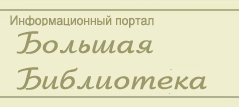Другое : Survey of the British Geography and Life
Survey of the British Geography and Life
Survey of the
British Geography and Life
Britain forms the greater part of
the British Isles, which lie off the north-west coast of mainland Europe. The
full name is the United Kingdom of Great Britain and Northern Ireland. Great
Britain comprises England, Scotland and Wales. With a total area of about
242,000 sq km, Britain is just under 1000 km long and some 500 km across in the
widest part. London is the capital. Other major cities include Birmingham,
Manchester, Glasgow, Edinburgh, Cardiff and Belfast. There are some 58 million
people. Population density is highest in England and lowest in Scotland.
Structure: a basic highland/lowland
division - NW/SE.
Mountain regions include: the
Scottish Highlands - Ben Nevis 1343m ; the Lake District - Scafell 978 m; North
Wales - Snowdon 1085 m; the Pennines - a limestone "backbone" in N.
England; the Jurassic limestone escarpments, esp. the Cotswolds; the chalk
escarpments, esp. the Chilterns, the North and South Downs;
NB: the Weald, the Fens (N. of
Cambridge), the Broads (E. of Norwich).
Climate: the climate is changeable
through the seasonal cycle. Generally, the winter months from December to
February are the coldest, with the shortest hours of daylight. The temperature
rises through the spring months of March to May, and is highest throughout the
summer months from June to August. Temperatures rarely exceed 32°C (90° F) or
fall below -10°C (14° F ). London is the hottest place. The weather is mainly
influenced by depressions moving eastwards across the Atlantic. The average
annual rainfall is more than 1,600 mm (over 60 inches) in the highland areas of
the west and north but less than 800 mm (30 inches) over the more fertile
lowlands of the south and east.
Britain's lowest air temperatures
-27°C was recorded at Braemar in Scotland in February 1895, whilst the highest,
37.1°C, was registered at Cheltenham south-west England, in August 1990.
Wildlife: the most widespread wild
vegetation in Britain are the heather, grasses, gorse and bracken of the
moorland countryside in the,highland regions. In lowland Britain, with the
exception of a few patches of heath and forest, farmland mainly covers the
area. Common trees include oak, beech, ash and, in Scotland, pine and birch.
Wild animal life comprises mainly species of smaller mammals ( such as badgers,
foxes and rodents), birds (over . 400 species of which have been recorded,
either breeding or migrating) and insects. There are about 30 kinds of
freshwater fish. Reptiles and amphibians are few. Common and gray seals may be
seen off parts of the coast.
For many years Britain has had
policies and laws to protect its natural environment - e.g., designating
National Parks and areas of outstanding natural beauty.
People: Britain absorbed a range of
foreign cultures and traditions during the early centuries - Roman, Viking and
Norman among them. In more recent times people from overseas have continued to
settle in Britain, either to escape political or religious persecution, or in
search of economic opportunities. Ethnic minorities now comprise about 5. 5 %
of the population. All citizens enjoy the same rights and privileges. Racial
discrimination is unlawful under the Race Relations Act 1976.
Languages: English is the official
language, although the Welsh language has equal validity in Wales.
Cornish is now extinct (last speaker
died around 1800);
Welsh spoken by 25% of total
population of Wales but in some rural areas by 75%: still very much alive with
radio and TV programmes, newspapers and festivals (Eisteddfod). Gaelic is only
spoken in rural N.W.Scotland: in contrast to Welsh, it is rapidly declining
with fewer than 50,000 speakers. Local place names in all these areas are based
on the appropriate language, however. Irish Gaelic (Erse) is rather
artificially imposed within the education system. It is the natural speech of
only small numbers along the West coast.
Список литературы
Для
подготовки данной работы были использованы материалы с сайта http://linguistic.ru/
|


